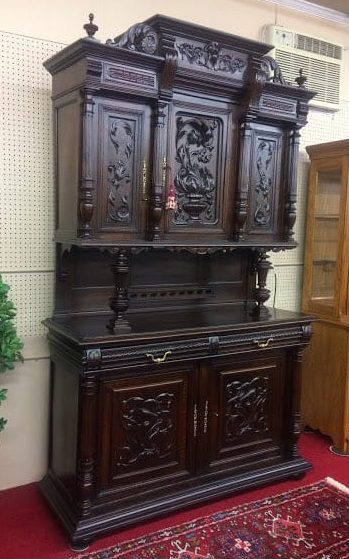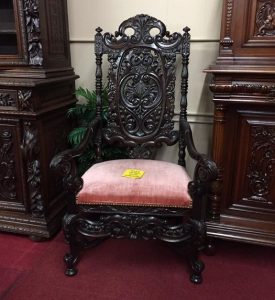
Gothic furniture is known for its dark, mysterious, and even eerie ambiance that has captivated many people. It is a furniture style that emerged during the Middle Ages and has been popular ever since. Gothic furniture is known for its intricate and ornate details, including arches, spires, and traceries, which often mimic the intricate stonework found in Gothic architecture. In this blog post, we will explore the world of gothic furniture, its history, features, and design elements that make it stand out in the realm of interior design.
History of Gothic Furniture:
Gothic furniture emerged during the Middle Ages in Europe, and it was heavily influenced by Gothic architecture that was characterized by pointed arches, ribbed vaults, and flying buttresses. Gothic furniture was often made from oak or walnut and featured intricate carvings and details that resembled the stonework found in Gothic architecture. During the Renaissance, Gothic furniture fell out of fashion, replaced by more classical styles. However, in the 19th century, the Gothic revival movement brought back the popularity of Gothic furniture, especially in Victorian England.
Features of Gothic Furniture:
Gothic furniture is characterized by its dark and mysterious ambiance, which is created by its heavy use of wood and ornate details. Some of the features of gothic furniture include:
1. Carvings
Gothic furniture is known for its intricate carvings that are often inspired by Gothic architecture. These carvings can be found on the legs, arms, and backs of chairs and sofas, as well as on the edges of tables and cabinets.
2. Arches
Gothic furniture often features arches, which are a hallmark of Gothic architecture. These arches can be found on doors, cabinets, and even as part of the legs of furniture.
3. Spikes and Traceries
Gothic furniture often features spikes and traceries, which are ornamental details that resemble the stonework found in Gothic architecture. These details can be found on the arms and legs of chairs and sofas, as well as on the edges of tables and cabinets.
4. Dark Wood
Gothic furniture is often made from dark wood, such as oak or walnut, which adds to its mysterious ambiance. The wood is often left unfinished or stained to enhance its natural beauty.

Design Elements of Gothic Furniture:
Gothic furniture is known for its unique design elements that make it stand out in the realm of interior design. Some of the design elements of gothic furniture include:
1. Ornate Details
Gothic furniture is heavily ornamented with intricate carvings, arches, spikes, and traceries. These details add to the furniture’s decorative appeal and create a sense of drama and elegance.
2. Bold Shapes
Gothic furniture often features bold shapes, such as arched backs, pointed legs, and curved arms. These shapes add to the furniture’s visual appeal and create an interesting contrast with the more conventional shapes found in modern furniture.
3. Functionality
Although gothic furniture is known for its ornate details and dramatic shapes, it is also functional. Gothic chairs and sofas are designed to be comfortable and supportive, while tables and cabinets are designed to be durable and practical.
4. Dark and Mysterious Ambiance
Gothic furniture is designed to create a dark and mysterious ambiance that evokes the grandeur and mystery of Gothic architecture. This ambiance is created by the furniture’s heavy use of wood, ornate details, and bold shapes.
Conclusion:
Gothic furniture is a unique and mysterious furniture style that has captivated people for centuries. Its intricate carvings, arches, and spikes create a sense of drama and elegance, while its dark wood and bold shapes add to its mysterious ambiance. Gothic furniture is also functional and practical, ensuring that it is not just a decorative piece but a practical addition to any home. If you are looking to add a touch of mystery and elegance to your home, then gothic furniture, like an antique cabinet, is the perfect choice.
